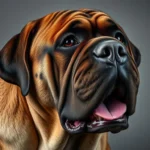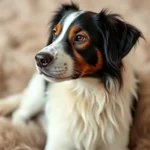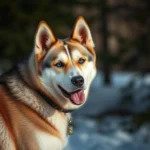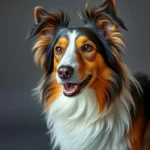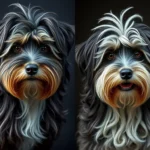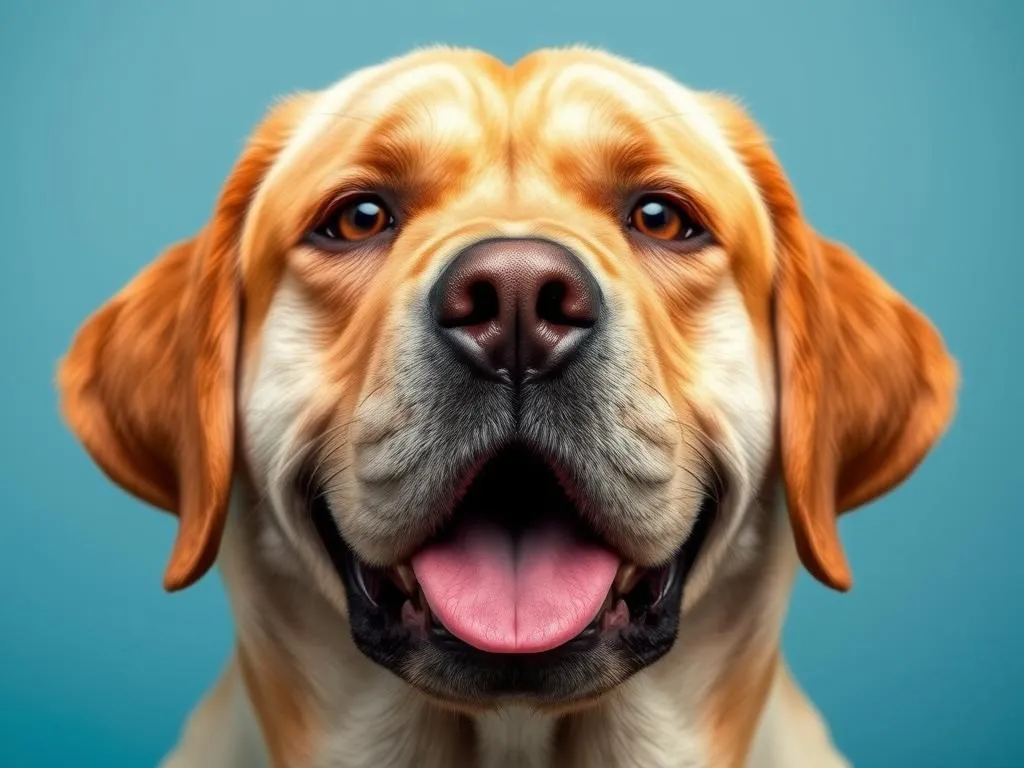
Introduction
Choosing the right dog breed is one of the most important decisions any potential pet owner can make. Among the many factors to consider, drooling is often a common concern, especially for those who are drawn to big dog breeds that don’t drool. While drooling is a natural behavior in dogs, excessive drooling can lead to hygiene issues and discomfort for both the pet and the owner.
This article aims to inform readers about big dog breeds that are less prone to drooling, providing insights into their characteristics, benefits of owning such breeds, and tips for choosing the right dog for your lifestyle. Understanding the factors that contribute to drooling—such as breed characteristics and health issues—will also help you make an informed decision when selecting your new furry friend.
Understanding Drooling in Dogs
What Causes Drooling?
Drooling in dogs, known scientifically as “ptyalism,” is primarily due to the production of saliva. While some saliva is necessary for digestion, various physiological and environmental factors can cause increased drooling. Common reasons include:
- Physiological Reasons: Dogs produce saliva in preparation for eating, but some breeds naturally produce more than others.
- Health Issues: Dental problems, nausea, and other medical conditions can lead to excessive drooling.
- Environmental Factors: Heat and stress can also impact drooling frequency.
Why Some Breeds Drool More Than Others
Certain breeds are genetically predisposed to drooling, often due to the structure of their jaw and lips. Breeds with loose skin around their mouths or pronounced jowls tend to drool more. For instance, breeds like the Saint Bernard or the Bloodhound are known for their slobbering tendencies, while others like the Labrador Retriever or the Doberman Pinscher tend to have minimal drooling.
Benefits of Choosing Low-Drool Breeds
Health Considerations
Choosing a big dog breed that doesn’t drool can lead to several health benefits. Reduced drooling minimizes the risk of drool-related health issues, such as skin irritation and infections. Additionally, less drool means easier maintenance and grooming, allowing pet owners to focus on other aspects of care.
Home Environment
The impact of drooling on living conditions is significant. A dog that drools less will lead to less mess around the house, reducing the need for constant cleanup. This is especially important for families with children or pets, as it helps maintain a cleaner and more comfortable living environment.
Lifestyle Compatibility
For families with allergies or sensitivities, a low-drooling dog can be an ideal choice. These breeds are often better suited for active lifestyles, as they are less likely to leave a trail of slobber during outdoor activities. Choosing a dog that aligns with your lifestyle can lead to a more harmonious relationship.
Top Big Dog Breeds That Don’t Drool
Overview of Criteria for Selection
When considering big dog breeds that don’t drool, it’s essential to focus on size classification and characteristics that minimize drooling. The breeds listed below are recognized for their size, temperament, and low drooling tendencies.
Breed Profiles
Labrador Retriever
Labrador Retrievers are known for their friendly demeanor and intelligence. They are versatile, making them excellent family pets and service dogs.
- Key Traits and Temperament: Friendly, outgoing, and eager to please.
- Maintenance and Care Tips: Regular exercise and mental stimulation are crucial. Grooming is minimal, requiring only occasional brushing.
German Shepherd
German Shepherds are known for their loyalty and protective instincts, making them great working dogs and family companions.
- Key Traits and Temperament: Confident, courageous, and intelligent.
- Maintenance and Care Tips: They require regular exercise and training. Grooming involves periodic brushing to manage shedding.
Siberian Husky
Siberian Huskies are energetic and friendly dogs known for their striking appearance and playful nature.
- Key Traits and Temperament: Friendly, outgoing, and independent.
- Maintenance and Care Tips: Huskies need plenty of exercise and mental stimulation. Regular grooming is necessary, especially during shedding season.
Rottweiler
Rottweilers are known for their strength and loyalty, often serving as guard dogs and family protectors.
- Key Traits and Temperament: Confident, fearless, and affectionate with family.
- Maintenance and Care Tips: Regular training and socialization are essential. Grooming is minimal, requiring occasional brushing.
Doberman Pinscher
Doberman Pinschers are intelligent and alert, making them excellent companions and guard dogs.
- Key Traits and Temperament: Loyal, intelligent, and energetic.
- Maintenance and Care Tips: They require regular exercise and mental challenges. Grooming is easy, with minimal shedding.
Boxer
Boxers are playful, energetic, and affectionate dogs that make great family pets.
- Key Traits and Temperament: Fun-loving, loyal, and protective.
- Maintenance and Care Tips: Regular exercise is crucial for their health. Grooming is minimal, with occasional brushing needed.
Great Dane
Great Danes are known for their impressive size and gentle demeanor, often referred to as “gentle giants.”
- Key Traits and Temperament: Friendly, patient, and good-natured.
- Maintenance and Care Tips: They require moderate exercise and a balanced diet. Grooming is limited, with occasional brushing needed.
Summary of Breeds
| Breed | Drooling Tendency | Key Characteristics |
|---|---|---|
| Labrador Retriever | Low | Friendly, intelligent, versatile |
| German Shepherd | Low | Courageous, loyal, protective |
| Siberian Husky | Low | Energetic, friendly, independent |
| Rottweiler | Low | Confident, fearless, affectionate |
| Doberman Pinscher | Low | Loyal, intelligent, energetic |
| Boxer | Low | Playful, loyal, protective |
| Great Dane | Low | Gentle, friendly, patient |
Choosing the Right Big Dog for Your Lifestyle
Assessing Your Living Situation
Before bringing a big dog into your home, assess your living environment. Consider space requirements, especially for larger breeds, and whether your home is suitable for active dogs. Families with children or other pets should also think about compatibility.
Activity Level and Exercise Needs
Each breed has different exercise requirements. It’s essential to match your energy level with the breed’s needs. For example, a Labrador Retriever thrives on daily exercise, while a Great Dane may require less rigorous activity. Understanding each breed’s exercise needs will help ensure a happy and healthy dog.
Grooming and Care Requirements
Low-drooling breeds often have minimal grooming requirements. Regular brushing and occasional baths will keep their coat healthy. However, it’s important to be aware of any specific health considerations for each breed, such as hip dysplasia in Rottweilers or heart issues in Doberman Pinschers.
Training and Socialization
Importance of Early Training
Training is crucial for large breeds, as they can quickly become unmanageable without proper guidance. Starting training early helps establish good behavior and strengthens the bond between owner and dog. Utilize positive reinforcement methods to encourage desired behaviors.
Socialization with Other Pets and People
Socialization is vital for big dog breeds to ensure they develop into well-rounded pets. Expose them to different environments, people, and other animals from a young age. Gradually introduce them to various settings to help them adapt and reduce any potential anxiety.
Conclusion
In conclusion, choosing a big dog breed that doesn’t drool can offer numerous advantages, from health considerations to lifestyle compatibility. By understanding the characteristics of low-drooling breeds and evaluating your living situation and activity levels, you can find the perfect furry companion. Each breed brings unique traits and needs, so take the time to research and understand which one aligns best with your lifestyle and preferences.
Consider adopting from local shelters or connecting with reputable breeders to find your ideal dog. Embracing the journey of pet ownership can lead to a fulfilling relationship with your new best friend.



